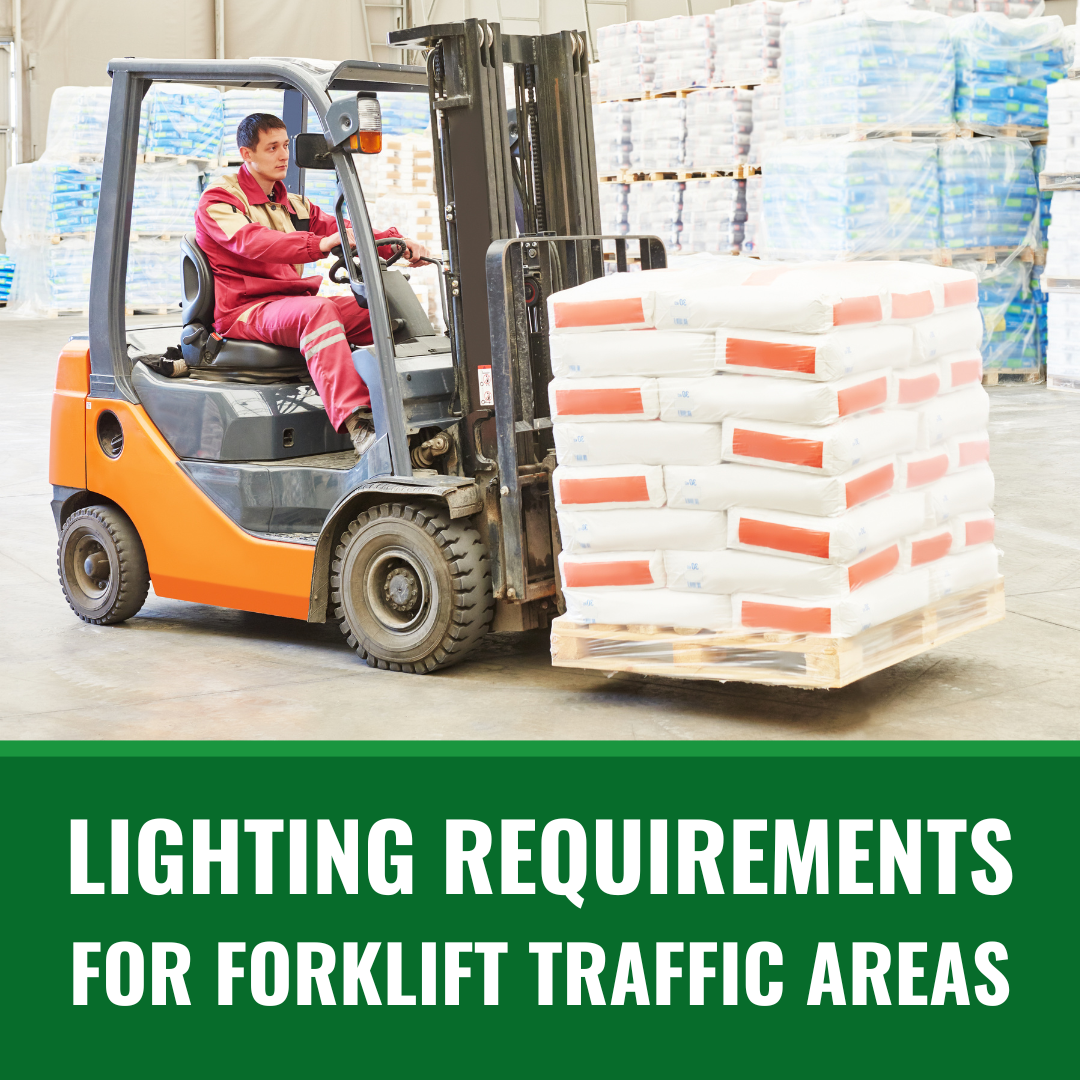We use cookies to make your experience better. To comply with the new e-Privacy directive, we need to ask for your consent to set the cookies. Learn more.
Lighting Requirements for Forklift Traffic Areas
Warehouses can be especially tricky to keep well-lit, especially in aisles, where tall, packed shelving units may block overhead lights. Regardless of the difficulty, employers must make sure forklift operators can see what they’re driving into — visibility is a crucial prerequisite for the safe use of lift trucks.

But how dim is “too dim?” Given the variance in eyesight between individuals, an aisle that seems perfectly visible to one forklift operator may be dangerously murky to the next. Here are the main factors to consider when examining lighting in forklift traffic areas:
1. Follow the OSHA standards.
The Occupational Safety and Health Administration requires forklift operating areas to be lit with an intensity of at least 2.0 lumens per square foot. If you’ll be operating forklifts in a dimmer space than this, you’ll need to use headlights or some other form of directional illumination.
Lighting requirements specifically for forklift traffic areas are found in 29 CFR 1910.178(h)(2), while minimum intensities for construction sites are listed in 29 CFR 1926.56(a).
2. For more detailed requirements, consult the Illuminating Engineering Society standards.
The IES publishes a detailed lighting guide for industrial facilities. Now on its 10th edition, the IES Lighting Handbook describes guidelines based on the work being done, the level of detail the work requires, and the average staff age, among other variables. Unfortunately, it’s not a free publication — visit the IES bookstore for a copy.
The IES also partnered with the American National Standards Institute to create a national guideline for industrial lighting, found in ANSI/IEP RP-7-1990. OSHA has publicly stated that the ANSI/IES RP-7-1990 guidelines comply fully with OSHA lighting standards for working with exposed energized components.
3. Consider individual differences between forklift operators.
As we get older, we need brighter lights to maintain visibility. At age 60, for instance, we require 6 times more light than a 20-year-old to make out the same level of detail.
Staff that wear glasses may experience glare in certain arrangements of lighting. Warehouse managers should set the illumination levels to provide excellent visibility for all of their forklift operators; high-intensity movable lights, such as the Hang-a-Light Portable Work Light, can help to provide additional brightness for staff who need it.
OSHA and ANSI standards give us specific goals for lighting in forklift traffic areas, but you may want to exceed the minimum brightness standards in some cases. When in doubt, keep a stock of additional portable lights that staff can affix to shelving units to boost illumination. If certain aisles can’t be lit, use truck-mounted illumination to keep visibility as high as possible.
References:
Ryan, John and L.D. Ryan. The Forklift Manual. Siloam Springs, AR: Donegal Bay Incorporated Publishing, 2006. Print.
Clark, Patricia. “OSHA Standard Interpretations - Questions Related to 29 CFR 1910.331-335.” OSHA. Occupational Safety & Health Administration, United States Department of Labor, 28 Apr. 1992. Web. 29 Sept. 2015.
“Powered Industrial Trucks - 1910.178.” OSHA. Occupational Safety & Health Administration, United States Department of Labor, 2006. Web. 29 Sept. 2015.
